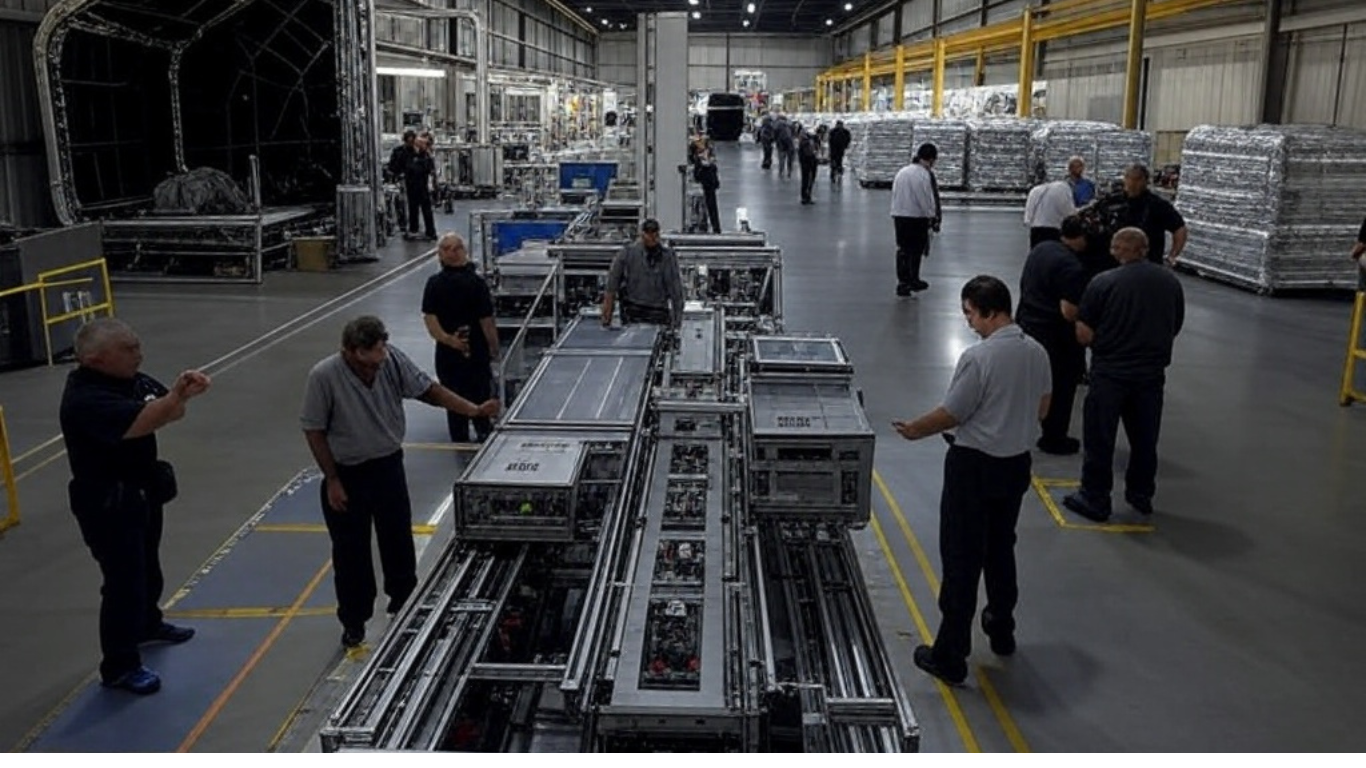Inside SpaceX’s Starlink Factory: A Glimpse at the Future of Global Connectivity

March 20, 2025 – Imagine a factory where raw plastic pellets and aluminum slabs are transformed into cutting-edge satellite internet kits at a blistering pace of 15,000 units per day. That’s not a sci-fi vision—it’s the reality at SpaceX’s sprawling facility just outside Austin, Texas. A recently released video offers a rare peek into this high-tech marvel, showcasing how Elon Musk’s aerospace giant is revolutionizing internet access for millions worldwide, one Starlink kit at a time.
The video, shared by SpaceX on March 18, 2025, pulls back the curtain on the Bastrop factory, a site less than two years old that has already redefined what’s possible in manufacturing. “Raw plastic pellets come in, raw aluminum comes in, and we make those into the Starlink kits, then ship them right out to customers’ homes,” explains John Federspiel, SpaceX’s Senior Director for Starlink Product Engineering, in the footage. At 15,000 kits daily—translating to over 5.5 million annually—this operation is a testament to SpaceX’s relentless drive to scale production and connect the planet.
From Scratch to Sky: The Starlink Assembly Line
The footage reveals a mesmerizing dance of automation and precision. Machines hum along the factory floor, molding plastic and shaping aluminum into the sleek, compact dishes that form the backbone of Starlink’s consumer kits. These kits, complete with antennas that link to SpaceX’s constellation of over 7,000 low-Earth-orbit satellites, enable users to tap into high-speed internet from virtually anywhere with a clear view of the sky. The process is seamless: raw materials enter one end, and fully assembled kits roll off the other, ready to ship to a growing customer base that surpassed 5 million last week.
What’s striking is the factory’s youth and ambition. Built from the ground up in under two years, it now employs over 1,000 workers and churns out more than 70,000 kits weekly. But SpaceX isn’t stopping there. Alexandra Noe, Senior Director of Starlink Production, highlights plans to expand the facility by over a million square feet in 2025. “This will allow us to insource more of our manufacturing processes,” she says, “taking us from raw material to completed kit within these walls.” The expansion aims to meet soaring demand, as the previous production line was already maxed out.
Innovation Born of Necessity
The Bastrop factory’s success didn’t come without hurdles. Early Starlink dishes cost upwards of $3,000 to produce, forcing SpaceX to sell them at a loss until 2023. “Our previous generation of the production line was at its limit,” Noe notes in the video. Faced with this bottleneck, SpaceX innovated relentlessly, streamlining processes and cutting costs. The result? A facility that not only meets demand but sets a new benchmark for efficiency. Posts on X have hailed it as a “manufacturing powerhouse,” with some calling it a glimpse of “the future of industrial production.”
This isn’t just about numbers—it’s about impact. With over 7,000 satellites in orbit as of February 2025, Starlink now serves more than 5 million users across 100+ countries. From rural homes to disaster zones—like the areas hit by Hurricanes Helene and Milton, where SpaceX provided free kits and service—the network is bridging digital divides at an unprecedented scale. The Austin-area factory is the beating heart of that mission, turning raw materials into tools of connectivity.
A Bigger Vision in Motion
The video hints at even grander plans. SpaceX’s Bastrop site is poised to become the largest printed circuit board plant in the U.S., according to President Gwynne Shotwell’s comments last September. The expansion will boost production capacity beyond the current 5.5 million kits per year, aligning with SpaceX’s goal to deploy up to 42,000 satellites eventually. Each kit rolling off the line is a step toward Musk’s vision of a globally connected world—and perhaps beyond, given Starlink’s quirky terms of service clause about Mars.
For now, the factory’s output is tangible proof of SpaceX’s ability to marry ambition with execution. As Federspiel puts it, “We’re producing 15,000 a day straight out of the factory.” That’s not just a statistic—it’s a signal of how fast the boundaries of technology and access are shifting. Watch the video, and you’re not just seeing a factory at work; you’re witnessing the machinery of a connected future being built, one kit at a time.